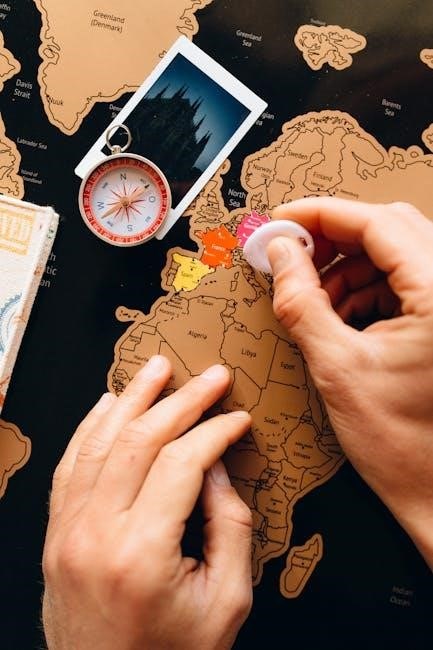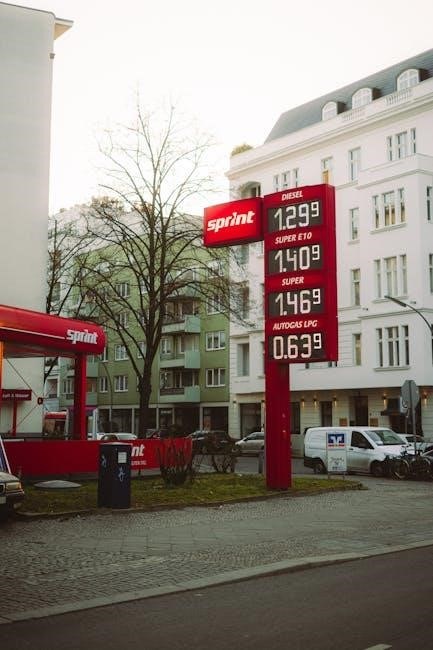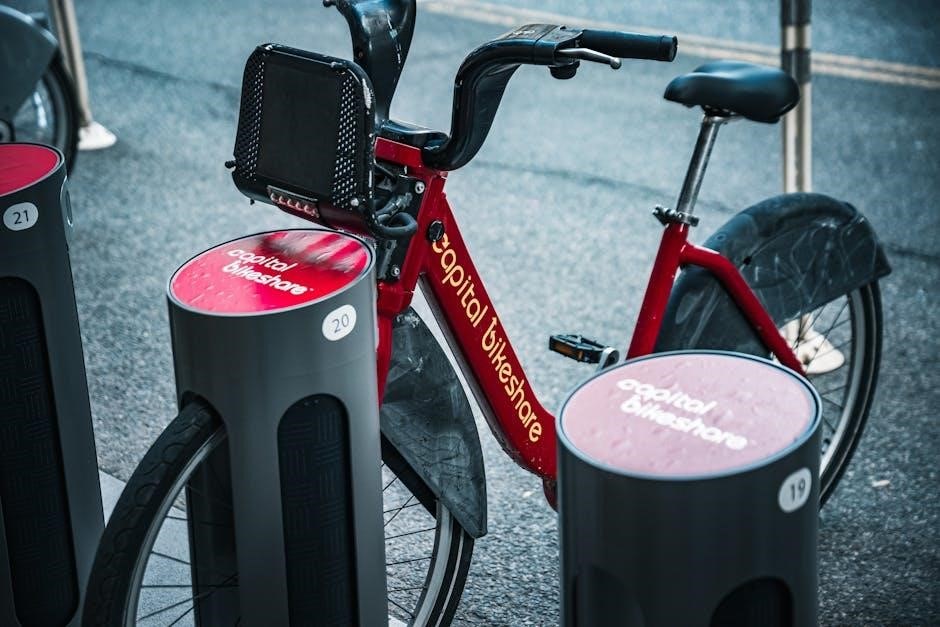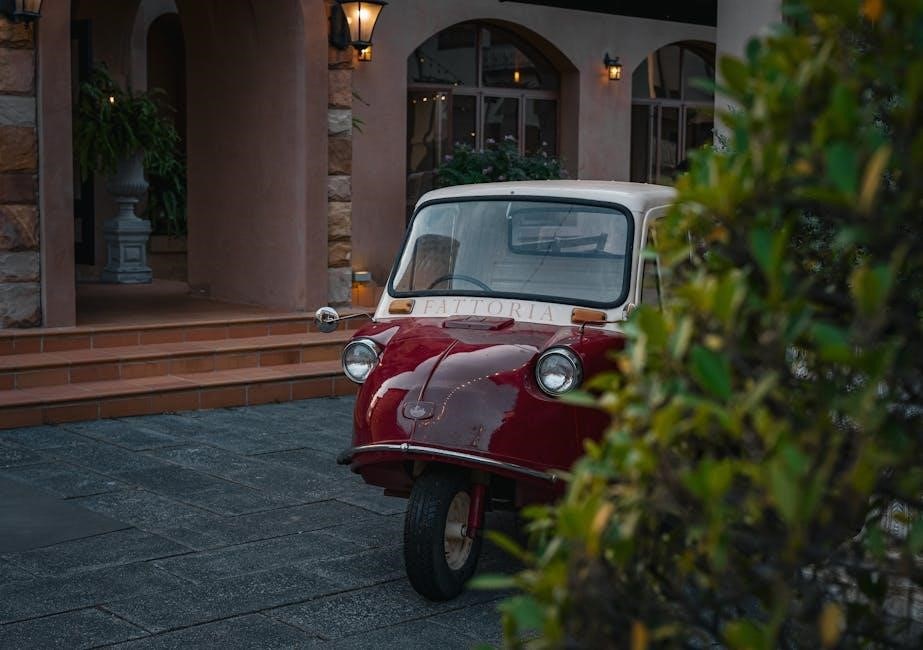
matchbox cars price guide with pictures
This guide provides detailed Matchbox car valuations, featuring high-quality images to aid identification. It covers models from 1947 to present, helping collectors assess rarity, condition, and market demand accurately.
Overview of Matchbox Cars and Their Collectibility
Matchbox cars are iconic collectibles with a rich history dating back to 1947. Their small size, detailed designs, and diverse themes have made them highly sought after by collectors worldwide. The collectibility of Matchbox cars lies in their rarity, condition, and historical significance. Early models, especially those from the 1950s and 1960s, are particularly valuable due to their limited production runs and unique features. Variations in color, wheels, and packaging further enhance their appeal. This guide helps collectors identify and evaluate these factors, providing a comprehensive resource to understand the value and desirability of Matchbox cars in the collector’s market.
Purpose of the Price Guide
The purpose of this price guide is to empower collectors with accurate valuations and detailed insights into the Matchbox car market. By providing up-to-date pricing information, high-quality images, and expert analysis, it helps collectors determine the value of their models. Whether you’re a seasoned enthusiast or a new collector, this guide serves as a trusted resource for buying, selling, and trading Matchbox cars. It also highlights rare and valuable models, offering a clear understanding of market trends and factors influencing prices, ensuring informed decisions in the dynamic world of Matchbox collecting.

Importance of High-Quality Pictures in Identification
High-quality pictures are essential for accurately identifying Matchbox cars, especially rare and valuable models. Detailed images reveal subtle variations in color, wheels, and packaging, which significantly impact value. For instance, the 1960 Magirus Deutz Crane, with its unique wheel types, can only be authenticated through clear visuals. Photos also help assess condition, showcasing mint examples or flaws. This visual aid enables collectors to distinguish between common and rare models, such as the 1953 Coronation Coach, and understand their market worth. By providing a clear reference, high-quality images empower collectors to make informed decisions when buying, selling, or trading their Matchbox cars.

Historical Overview of Matchbox Cars
Matchbox cars, introduced by Lesney Products in 1947, became iconic with their 1-75 series in 1953. The Superfast line in 1969 revolutionized the brand, and despite ownership changes, Matchbox remains a beloved collectible, blending history with modern designs.
Early Years: 1947-1953
Matchbox cars were first introduced by Lesney Products in 1947, marking the beginning of a beloved collectible toy. The initial models were simple, die-cast vehicles based on real-life cars, buses, and trucks. These early cars were sold in small boxes, hence the name “Matchbox.” The first series, produced from 1947 to 1953, featured models like the Ford V8 Saloon and the Jaguar XK120. These early models were known for their durability and attention to detail, appealing to children and collectors alike. The packaging was minimal, with each car placed in a small box. By 1953, Lesney shifted focus to producing 75 miniature models, setting the stage for Matchbox’s global success.
Golden Era: 1953-1969
The Golden Era of Matchbox cars began in 1953 with the introduction of the iconic 1-75 series, featuring miniature models of everyday vehicles. These models were known for their intricate details, vibrant colors, and affordability, making them highly collectible. The era saw the rise of popular models like the Ford Anglia and Volkswagen Beetle. In 1959, Lesney introduced color wheels, enhancing the cars’ appeal. By 1969, Matchbox transitioned to the Superfast series, with faster wheels, marking the end of the Golden Era. Models from this period, especially in mint condition, remain highly sought after by collectors, commanding significant prices due to their rarity and historical significance.

Transition and Evolution: 1969-2004
During this period, Matchbox underwent significant changes to remain competitive. In 1969, the company introduced Superfast wheels, replacing the original axles to rival Hot Wheels. The King Size series was renamed Speed Kings in 1970 and later Super Kings in 1977. The 1980s saw a shift toward plastic components, reducing weight and detail. Despite this, models from this era, such as the 1-75 series, retained their collectibility due to rarity and unique variations. By 2004, Matchbox had transitioned to modern manufacturing techniques, blending nostalgia with contemporary designs. This era’s models remain popular among collectors, with vintage pieces commanding higher prices due to their historical significance and condition.
Modern Era: 2004-Present
Since 2004, Matchbox has embraced modern manufacturing techniques, blending nostalgia with contemporary designs. The brand has collaborated with major automotive companies like BMW and Ferrari, producing highly detailed models. The introduction of lines such as Matchbox Collectors and Heritage Series has catered to both casual and serious collectors. Packaging now often features retro designs, enhancing collectibility. The rise of online marketplaces has transformed how these models are bought and sold, with rare variations and limited editions commanding premium prices. Mint condition and original packaging significantly impact value, making modern Matchbox cars both collectible and investment-worthy in today’s vibrant market.

Factors Affecting the Value of Matchbox Cars
The value of Matchbox cars is influenced by rarity, condition, age, and demand. Mint models with original packaging and unique variations command higher prices, while wear and common models reduce value significantly.
Rarity and Scarcity
Rarity significantly impacts the value of Matchbox cars. Limited production runs, discontinued models, and exclusive releases create scarcity, driving up demand. For instance, the 1961 Magirus Deutz Crane is highly sought after due to its limited production. Similarly, models with unique variations, such as specific wheel types or colors, are rare and valuable. The 1960 Volkswagen Van, especially with black plastic wheels, is a prime example. Scarcity also applies to models with production errors or those from specific regions. Collectors often pursue these rare finds, making them highly valuable. Understanding rarity helps collectors identify and appraise their Matchbox cars effectively.
Condition and Mint Value
Condition plays a crucial role in determining the value of Matchbox cars. Mint-condition models, with no signs of wear or damage, command the highest prices. Cars in their original packaging are particularly valuable, as they retain their authenticity and appeal. Even minor flaws, such as paint chips or wheel damage, can significantly lower a model’s worth. For example, a mint 1961 Magirus Deutz Crane can sell for thousands, while a damaged version might fetch only a fraction of that. Collectors should carefully inspect for scratches, rust, or missing parts when assessing value. Proper storage and handling are essential to preserving a car’s condition and maintaining its mint value.
Age and Historical Significance
Age significantly influences the value of Matchbox cars, with older models often commanding higher prices due to their rarity and historical appeal. Cars from the 1950s and 1960s, particularly those in excellent condition, are highly sought after by collectors. The historical significance of certain models, such as those produced during the transition from Lesney to Universal, adds to their desirability. Limited-edition releases and models tied to specific events or cultural movements also gain value over time. As years pass, the demand for vintage Matchbox cars grows, making them not only collectibles but also investments. Their age and historical context enhance their appeal and market worth.
Demand and Market Trends
Demand for Matchbox cars fluctuates based on market trends, collector preferences, and economic conditions. Rare and vintage models, especially those in pristine condition, consistently attract high prices. The rise of online marketplaces like eBay has increased visibility and competition, driving up demand for certain models. Collector communities and forums also influence trends, with specific series or variations gaining popularity over time. Additionally, limited editions and special releases create temporary spikes in demand. Understanding current market trends is crucial for buyers and sellers, as prices can vary significantly based on what collectors are actively seeking. Staying informed helps navigate the dynamic market effectively.
Price Guide for Rare and Valuable Matchbox Models
This section showcases rare Matchbox models, their prices, and factors affecting value. High-quality images help identify rare variations, aiding collectors in understanding market worth and trends effectively.
Top 10 Most Expensive Matchbox Cars
The rarest Matchbox cars command high prices due to their uniqueness and historical significance. A 1960-era van, for instance, sold for $1,199, with black wheels being the most valuable variant. Other rare models, such as the Ford Mustang and Ferrari 308, also rank high. Prices are determined by factors like condition, rarity, and demand. Collectors often rely on sales data and expert analysis to identify these gems. High-quality images in this guide help enthusiasts authenticate and value their finds, ensuring they recognize rare variations and unique features that elevate a model’s worth in the competitive collector’s market.

Price Ranges for Vintage vs. Modern Models
Vintage Matchbox cars, particularly those from the 1950s and 1960s, often command higher prices due to their rarity and historical significance. Models from this era can range from a few hundred to several thousand dollars, depending on condition and rarity. Modern models, produced from 2004 onward, generally have lower price points, typically ranging from $10 to $100 for standard releases. However, limited editions or unique designs can increase their value. The price guide highlights these distinctions, providing collectors with a clear understanding of how age and scarcity influence the market value of Matchbox cars, helping them make informed purchasing or selling decisions.
Role of Variations in Pricing
Variations in Matchbox cars significantly influence their pricing, as subtle differences can elevate their value. For instance, models with rare wheel types, such as black plastic wheels on the 1960 van, are more valuable than those with standard gray or silver wheels. Color variations, like unique paint schemes or two-tone finishes, also impact pricing. Packaging variations, such as rare blister packs or promotional boxes, can further enhance value. These differences are meticulously documented in price guides, helping collectors understand how specific traits affect a model’s worth. As a result, variations play a crucial role in determining the market value of Matchbox cars, making them highly sought after by enthusiasts.
Impact of Packaging on Value
Original packaging significantly enhances the value of Matchbox cars, especially for mint-condition models. Rare blister packs, promotional boxes, or sealed cases can increase a car’s worth due to their collectibility. For example, models in their original packaging from the 1950s-1960s are highly sought after, as they retain historical authenticity. Even minor flaws in packaging, like creases or tears, can affect value. Collectors often prioritize mint-in-box (MIB) items, as they preserve the car’s pristine state. Packaging serves as a protective shell and a historical artifact, making it a critical factor in determining a Matchbox car’s market value and desirability among enthusiasts.
How to Identify Rare Matchbox Cars
Examine model numbers, color variations, and unique features. Verify authenticity by checking details like wheels, axles, and packaging. Use visual guides to spot rare editions accurately.
Understanding Model Numbers and Codes
Matchbox cars are identified using specific model numbers and codes, which are crucial for determining their value and rarity. Early models (1947-1969) were numbered 1-75, while later series expanded this range. Codes like “A” or “B” often indicate variations in wheels, colors, or tampo designs. These codes, usually found on the base or packaging, help collectors verify authenticity and identify rare editions. By cross-referencing these codes with detailed guides, enthusiasts can accurately assess a model’s significance and market value. This systematic approach ensures collectors can distinguish common models from highly sought-after variants, making it essential for building a valuable collection.
Recognizing Rare Color Variations
Rare color variations significantly impact the value of Matchbox cars. For instance, the 1961 Magirus Deutz Crane in yellow is highly sought after, while the 1965 Volkswagen 1500 Karmann Ghia in light blue is exceedingly rare. Colors that differ from the standard palette often command higher prices. Collectors should look for unusual hues or unique paint schemes, as these can indicate limited production runs. Additionally, models with multi-tone or metallic finishes are often more valuable. Verifying these variations through high-quality images and reference guides is essential, as some rare colors may be mistaken for common ones. Condition and original packaging further enhance their desirability and value.
Checking for Unique Features and Details
Identifying unique features and details is crucial for determining the value of Matchbox cars. Look for variations in wheel types, such as the rare black plastic wheels on the 1960s-era models, which can significantly increase value. Other unique features include interior colors, window styles, and base modifications. For example, the 1961 Magirus Deutz Crane with a yellow cab and black boom is highly sought after. Additionally, models with opening parts or special decals can command higher prices. High-quality images and reference guides are essential for spotting these details. Always compare your model to known examples to ensure authenticity and accuracy in valuation.
Authenticity Verification Tips
Verifying the authenticity of Matchbox cars is essential to ensure their value. Start by examining the base for the model number and “Matchbox” logo, which should be clearly printed. Compare the car to high-quality images in price guides or catalogs to confirm details. Check for consistent coloring, accurate decals, and proper wheel types. Rare models often have unique features, such as specific interior designs or wheel variations. Consult collector forums or experts to validate rare or questionable models. Avoid replicas by ensuring all parts are original and properly aligned. Authenticity significantly impacts value, so thorough inspection is crucial for accurate pricing and collecting.
Step-by-Step Guide to Pricing Your Collection
Assess condition, rarity, and demand. Research recent sales on eBay and specialized forums. Use online price guides and catalogs for accurate valuations. Consult collector communities for expert insights.
Assessing the Condition of Your Matchbox Cars
Evaluating the condition of your Matchbox cars is crucial for determining their value. Start by inspecting the paint for chips, fading, or scratches. Check the wheels for damage or rust, as original wheels in pristine condition significantly impact value. Ensure all parts, such as windows or spoilers, are intact. Mint-condition cars with original packaging are highly sought after. Use a grading scale from poor to mint to categorize each car. High-quality photos can help document condition for potential buyers. Referencing collector guides or expert opinions can also provide clarity. Accurate condition assessment ensures fair pricing and attracts serious collectors.

Researching Recent Sales Data
Researching recent sales data is essential for accurately pricing your Matchbox cars. Use online marketplaces like eBay to filter for “sold” or “completed” listings, ensuring realistic valuations. Look for similar models, considering factors like condition, rarity, and packaging. Price guide websites and collector forums often compile sales data, providing insights into current market trends. High-quality photos can help identify rare variations and verify authenticity. By analyzing multiple sources, you can determine fair and competitive prices for your collection. Stay updated on demand fluctuations, as popular models may increase in value over time. This research ensures informed decisions when buying or selling.
Using Online Price Guides and Catalogs
Online price guides and catalogs are invaluable tools for determining the value of Matchbox cars. Websites like eBay, Etsy, and specialized collector forums provide detailed listings with high-quality images, helping identify rare models and variations. These platforms often include historical sales data, allowing you to track price trends over time. Catalogs such as the Matchbox Cars Price Guide offer comprehensive listings, including model numbers, production years, and condition-based valuations. By cross-referencing multiple sources, you can gain a clearer understanding of your collection’s worth. Additionally, many online guides feature community feedback, ensuring up-to-date and accurate pricing information for both vintage and modern Matchbox cars.
Consulting Collector Communities and Forums
Engaging with collector communities and forums is a powerful way to gain insights into Matchbox car values. Platforms like eBay, Etsy, and specialized forums allow collectors to share knowledge, discuss rare models, and validate pricing. These communities often feature experienced collectors who can provide expert opinions and real-time market trends. By participating in discussions, you can learn about rare variations, condition assessments, and demand fluctuations. Additionally, many forums offer access to detailed catalogs and price guides, ensuring you stay informed about current valuations. Networking with fellow enthusiasts can also lead to valuable resources and opportunities to buy or sell Matchbox cars effectively.

Where to Buy and Sell Matchbox Cars
Popular platforms include eBay, Etsy, and specialized collector forums. Auction houses and local toy fairs also offer opportunities to buy and sell rare Matchbox models effectively.
Online Marketplaces: eBay, Etsy, and More
Online platforms like eBay and Etsy are popular for buying and selling Matchbox cars. eBay offers a vast selection, with options to filter by rarity, condition, and price. Users can also view completed and sold listings to determine market value. Etsy specializes in vintage and rare models, catering to collectors seeking unique or hard-to-find items. Other platforms, such as specialized diecast forums and Facebook Marketplace, provide additional avenues for trading. When selling, high-quality photos and detailed descriptions are crucial for attracting buyers. These platforms simplify the process of connecting collectors worldwide, making them essential tools for Matchbox enthusiasts.
Specialized Collector Forums and Groups
Specialized collector forums and groups are invaluable for Matchbox enthusiasts, offering a platform to connect, trade, and share knowledge. These communities often feature detailed discussions on rare models, pricing trends, and collecting tips. Many forums, such as the North Carolina Hot Wheels Association, provide in-depth guides and resources for identifying rare variations. Members frequently share photos and insights, helping others authenticate and value their collections. These groups also host events and auctions, creating opportunities to acquire or sell rare Matchbox cars. By joining these networks, collectors can gain expertise, build relationships, and stay updated on the latest market trends and discoveries.
Auction Houses and Their Role
Auction houses play a crucial role in the Matchbox car market, offering a platform for rare and valuable models to be bought and sold. They provide a competitive environment where collectors can bid on unique items, often setting record prices. Auction houses specialize in verifying authenticity and showcasing high-quality photos to highlight a car’s condition and rarity. Many rare Matchbox cars, such as the 1960-era models with unique wheel variations, are sold through these platforms. Auction houses also help establish market standards, influencing price guides and collector trends. Their expertise ensures transparency and trust, making them a key resource for serious collectors seeking high-value items.
Local Toy Shows and Collectible Fairs
Local toy shows and collectible fairs are vibrant hubs for Matchbox car enthusiasts, offering opportunities to buy, sell, and trade rare models. These events bring collectors and dealers together, fostering a sense of community and competition. Attendees can inspect items in person, ensuring authenticity and condition. Experts often attend, providing valuations and insights. Rare models, such as vintage Lesney-era cars, frequently surface at these events. Collectors can negotiate prices directly, often finding unique or hard-to-find models. These fairs are invaluable for networking and staying informed about market trends, making them a must-visit for serious Matchbox car collectors seeking to expand or refine their collections.
Resources for Matchbox Car Collectors
This section highlights essential resources for Matchbox car collectors, including books, online forums, collector clubs, and price guide websites, offering detailed identification and valuation tools with high-quality images.
Recommended Books and Catalogs
For collectors seeking detailed information, Matchbox Cars Price Guide with Pictures is an excellent resource, offering high-quality images and valuations. The Big Book of Matchbox Superfast Toys: 1969-2004 provides comprehensive lists of basic models and variations. Additionally, Matchbox Toys: A Collector’s Guide covers the history and evolution of Matchbox cars, including rare models. These books are essential for identifying and pricing your collection, with many featuring detailed photography to help spot variations and condition. They also include historical context, making them invaluable for both new and experienced collectors aiming to build or expand their Matchbox car collections effectively.
Online Forums and Communities
Online forums and communities are invaluable resources for Matchbox car collectors. Platforms like eBay, specialized collector forums, and social media groups offer spaces to discuss, trade, and learn about Matchbox cars. These communities provide access to expert advice, rare model identification, and market trends. Many forums feature photo galleries and detailed discussions on pricing, variations, and condition assessments. Additionally, collector groups often share knowledge on maintaining and restoring models. Engaging with these communities can help collectors connect with like-minded enthusiasts, stay updated on market demands, and discover rare or hard-to-find models. They are essential for building and valuing a collection effectively.
Price Guide Websites and Tools
Dedicated price guide websites and tools are essential for Matchbox car collectors. Platforms like eBay, specialized collector sites, and catalog databases offer detailed pricing information. These resources often include high-quality images, model variations, and historical sales data. Tools such as price trackers and market analyzers help determine the value of rare and vintage models. Many websites provide filters to search by year, model, and condition, making it easier to find accurate pricing. Additionally, some platforms offer guides on identifying rare variations and understanding market trends. These tools are indispensable for collectors aiming to buy, sell, or appraise their Matchbox cars effectively.
Collector Clubs and Organizations
Collector clubs and organizations play a vital role in the Matchbox car community. These groups provide a platform for enthusiasts to connect, share knowledge, and showcase their collections. Many clubs host events, auctions, and exhibitions, offering opportunities to network with fellow collectors. They often publish newsletters, catalogs, and guides that include pricing insights and rare model updates. Some organizations also offer membership benefits like exclusive access to market trends and expert appraisals. Joining these clubs can significantly enhance one’s collecting journey by providing resources, support, and a sense of belonging within the Matchbox car enthusiast community.
Conclusion
This comprehensive guide offers insights into Matchbox car values, featuring detailed images and pricing trends. It aids collectors in building and valuing their collections effectively, covering rare models and market trends.
Final Tips for Building a Valuable Collection
To build a valuable Matchbox collection, focus on rare and high-condition models. Invest in early editions and unique variations, as these tend to appreciate. Stay informed about market trends and use price guides to make informed decisions. Join collector communities to network and gain insights. Regularly update your collection by researching recent sales data and auction results. Consider professional grading for rare items to enhance their value. Finally, store your cars in protective packaging to preserve their condition. By combining knowledge, patience, and strategic purchasing, you can create a collection that stands out and holds long-term value.
Staying Updated on Market Trends
Staying updated on Matchbox car market trends is crucial for collectors. Regularly check online marketplaces like eBay and specialized forums for recent sales data. Auction houses and collector communities often reveal emerging trends. Subscribe to price guide updates and follow expert analyses to understand shifting demand. High-quality pictures in guides help identify rare variations. Monitor the popularity of specific models and color schemes, as these can significantly impact value. By staying informed, collectors can make timely decisions to buy, sell, or trade, ensuring their collection remains competitive and valuable in the ever-changing market landscape.
The Joy of Collecting Matchbox Cars
Collecting Matchbox cars is a rewarding hobby that combines nostalgia, creativity, and excitement. The thrill of the hunt for rare models, the satisfaction of completing a series, and the joy of showcasing a curated collection are unparalleled. Many collectors cherish the memories tied to specific models, evoking childhood nostalgia. The community aspect adds to the fun, with forums and events fostering connections among enthusiasts. Whether focusing on vintage rarities or modern designs, the journey of collecting Matchbox cars offers endless enjoyment. It’s a hobby that blends personal passion with the potential for value appreciation, making it a timeless pursuit for collectors of all ages.
Related posts:
Archives
Calendar
| M | T | W | T | F | S | S |
|---|---|---|---|---|---|---|
| 1 | 2 | |||||
| 3 | 4 | 5 | 6 | 7 | 8 | 9 |
| 10 | 11 | 12 | 13 | 14 | 15 | 16 |
| 17 | 18 | 19 | 20 | 21 | 22 | 23 |
| 24 | 25 | 26 | 27 | 28 | 29 | 30 |
Leave a Reply
You must be logged in to post a comment.